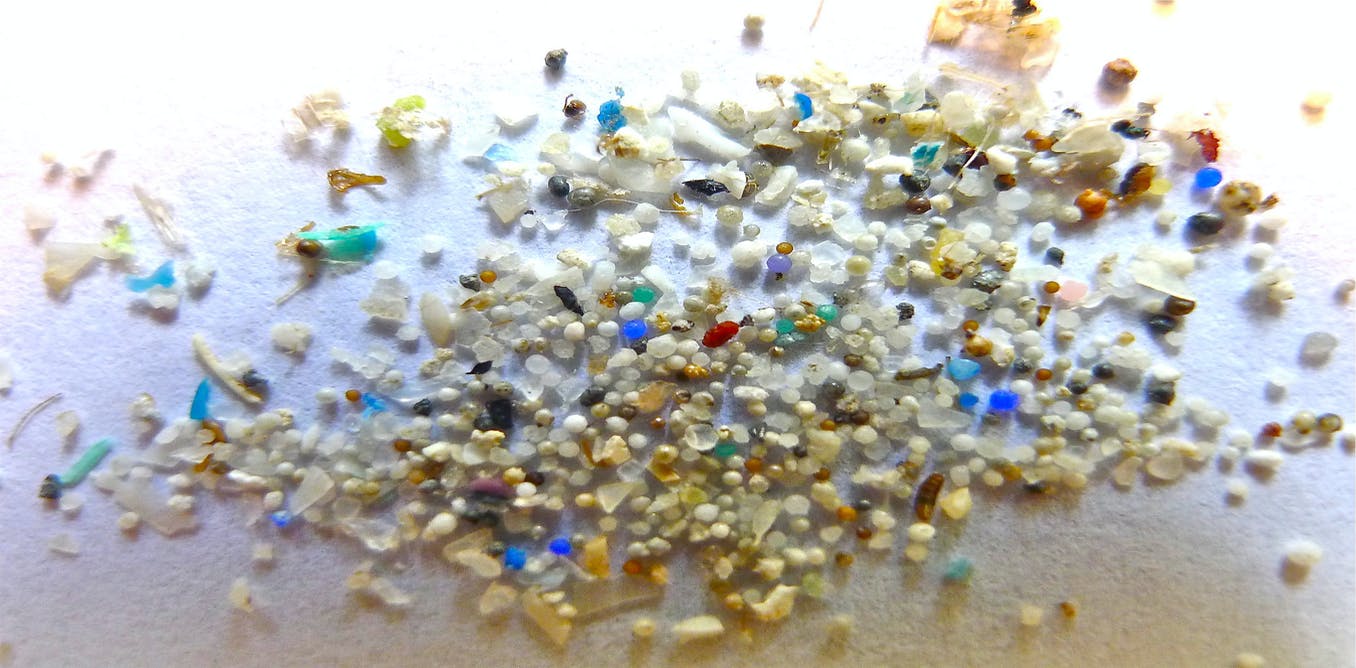A new study is showing that the number of microbes with the ability to break down plastic is growing with the level of plastic pollution.
This is the finding of a new study from a Swedish university that measured samples of environmental DNA from around the globe. Although the results illustrate the scale of the impact plastic pollution is now having on the environment, they also suggest new solutions for managing the problem.
Here at Herculean Strength, we’ve been reporting the global plastic pollution crisis, and in particular growing awareness of the threat to health and fertility posed by microplastics, tiny fragments of plastic whose serious negative effects on humans we are only beginning to understand.

Plastic-eating microbes: new study

Over the past seventy years, mass-production of plastic has exploded from around 2 million tonnes per year to around 380 million, and with it the amount of plastic polluting our environment, especially our seas and oceans.
Every year around 8 million tonnes of plastic escape into the world’s seas and oceans. Worse still, plastic can take many hundreds of years to degrade by natural processes, meaning that the huge quantities of plastic that already pollute the waters will remain there long after any of us is gone.
One potentially positive result of this explosion of plastic has been that certain microbes have evolved the ability to break down different kinds of plastics.
The new study out of Sweden analysed samples of environmental DNA from hundreds of locations around the world. The researchers used computer modelling to search for microbial enzymes with plastic-degrading potential, and these numbers were then cross-referenced with the official numbers for plastic waste pollution across countries and oceans.
“Using our models, we found multiple lines of evidence supporting the fact that the global microbiome’s plastic-degrading potential correlates strongly with measurements of environmental plastic pollution — a significant demonstration of how the environment is responding to the pressures we are placing on it,” says Aleksej Zelezniak, Associate Professor in Systems Biology at Chalmers University of Technology, where the research was carried out.
To put it simply, the quantity and diversity of plastic-digesting enzymes is growing in direct response to local levels of plastic pollution.
In total, the researchers found over 30,000 enzyme ‘homologues’ (similar protein sequences) with the potential to degrade 10 different types of commonly used plastic. Some of the locations that contained the highest amounts of these enzymes were famous for being highly polluted, such as the Mediterranean Sea and South Pacific Ocean.
“Currently, very little is known about these plastic-degrading enzymes, and we did not expect to find such a large number of them across so many different microbes and environmental habitats. This is a surprising discovery that really illustrates the scale of the issue,” explains Jan Zrimec, first author of the study and former post-doc in Aleksej Zelezniak’s group, now a researcher at the National Institute of Biology in Slovenia.
“The next step would be to test the most promising enzyme candidates in the lab to closely investigate their properties and the rate of plastic degradation they can achieve. From there you could engineer microbial communities with targeted degrading functions for specific polymer types,” explains Aleksej Zelezniak.
The microplastic threat
In recent months we’ve been covering the plastic pollution crisis, and in particular the role of microplastics, in great detail.
Microplastics are carriers of toxic xenoestrogens, industrial chemicals that have disastrous gender-bending effects. These chemicals are believed to be one of the principal causes of a calamitous decline in fertility that could bring about the end of human reproduction as we know it.
By 2045, according to Professor Shanna Swan, the majority of men may no longer be able to reproduce because of the effects of harmful chemicals from a variety of common household sources.
“We’re about 40 years behind global warming, in terms of awareness,” she says – yet the threat to human survival is just as great as, if not greater than, our concerns about greenhouse gas emissions.
According to Swan’s projections from the available data, by 2045 the sperm count of the median man will reach zero – meaning that one half of all men will have no sperm at all, and the other half will have an amount that is barely more than zero. Functionally, all men will be infertile.
The implications should be obvious: no sperm, no babies. Such a scenario has already been dubbed ‘Spermageddon’.
But it’s not just xenoestrogens that are responsible for the precipitous decline in male fertility we’re witnessing. Swan also points to a variety of other factors that seem to be at work, including the use of contraceptives, obesity, smoking and ‘cultural shifts’, a rather vague term which would have deserved further explanation.
Could it be that as men behave – or are given less room to behave – in less stereotypically manly ways, they may actually become so? There may be other biological factors at work too, she suggests, pointing to the collapse in testosterone levels in western men over the last half century.
SHOCK STUDY REVEALS EXTENT OF MICROPLASTIC POLLUTION IN THE HOME
A new study of microplastic pollution in the home has revealed that we may be breathing in up to 7000 microplastic particles a day, 100 times the amount the researchers predicted.
Experts say microplastic pollution now has the potential to be a health threat that ranks alongside, or is worse than, asbestos and tobacco.
The research was commissioned for the British television program Good Morning Britain, and aired on an exclusive special this morning.
CLICK HERE TO READ MORE
While a reduction in testosterone levels is a fact of life for all men as they age – after the age of 30, a man can expect to lose 1% of his natural testosterone every year for the rest of his life – this natural reduction pales in comparison with the society-wide collapse in T levels that has occurred over the second half of the twentieth and the first quarter of the twenty-first century.
Men today have considerably less T than men of the same age even a single generation ago. A 2007 study in the Journal of Clinical Endocrinology and Metabolism showed a significant reduction in the T levels of men since the 1980s. A 60-year-old American man in 2004, for example, had 17% less testosterone than a 60-year-old American man in 1987.
While the collapse of testosterone is likely to be linked to the ubiquity of the xenoestrogenic chemicals Swan warns about, sedentary lifestyles and the consumption of phytoestrogens are also likely to be playing a large role.
All in all, it adds up to a witch’s brew of environmental, social and biological factors that are making it ever harder for men to maintain their masculinity and fulfil their biological purpose.
As well as their know effects on humans’ delicate hormone balance, evidence is growing that microplastics also have other physical effects on humans.
A new study has shown, for instance, that microplastics can alter the shape of human lung cells and affect their functioning.
As a press release for the research notes: “After only a few days, the scientist began to observe some strange changes take pace, finding that the plastic particles caused the cells’ metabolism to slow down and hampered their proliferation and growth.”
The microplastics didn’t kill the lung cells, but they did alter their function and integrity in ways that are seriously worrying and suggest that people with lung conditions could be at elevated risk of harm from these microscopic pieces of plastic.
In truth, though, it will be a long time before we fully understand the effects of microplastic pollution on humans. Hopefully, it won’t be too late to do something about them.


Don’t hesitate to email us at [email protected] for personalized coaching and a client questionnaire if you’d like DEDICATED tailor-made personal training on strength training, building muscle, losing fat, developing athleticism, and more — all to your liking, lifestyle, habits, and taste!
Otherwise, don’t forget to claim your FREE eBook detailing how to lose 20lb of fat while building muscle in 12 weeks! You can claim it here.
Alternatively, you can pick up a FREE eBook on fundamental strength principles offering an introductory workout program.











